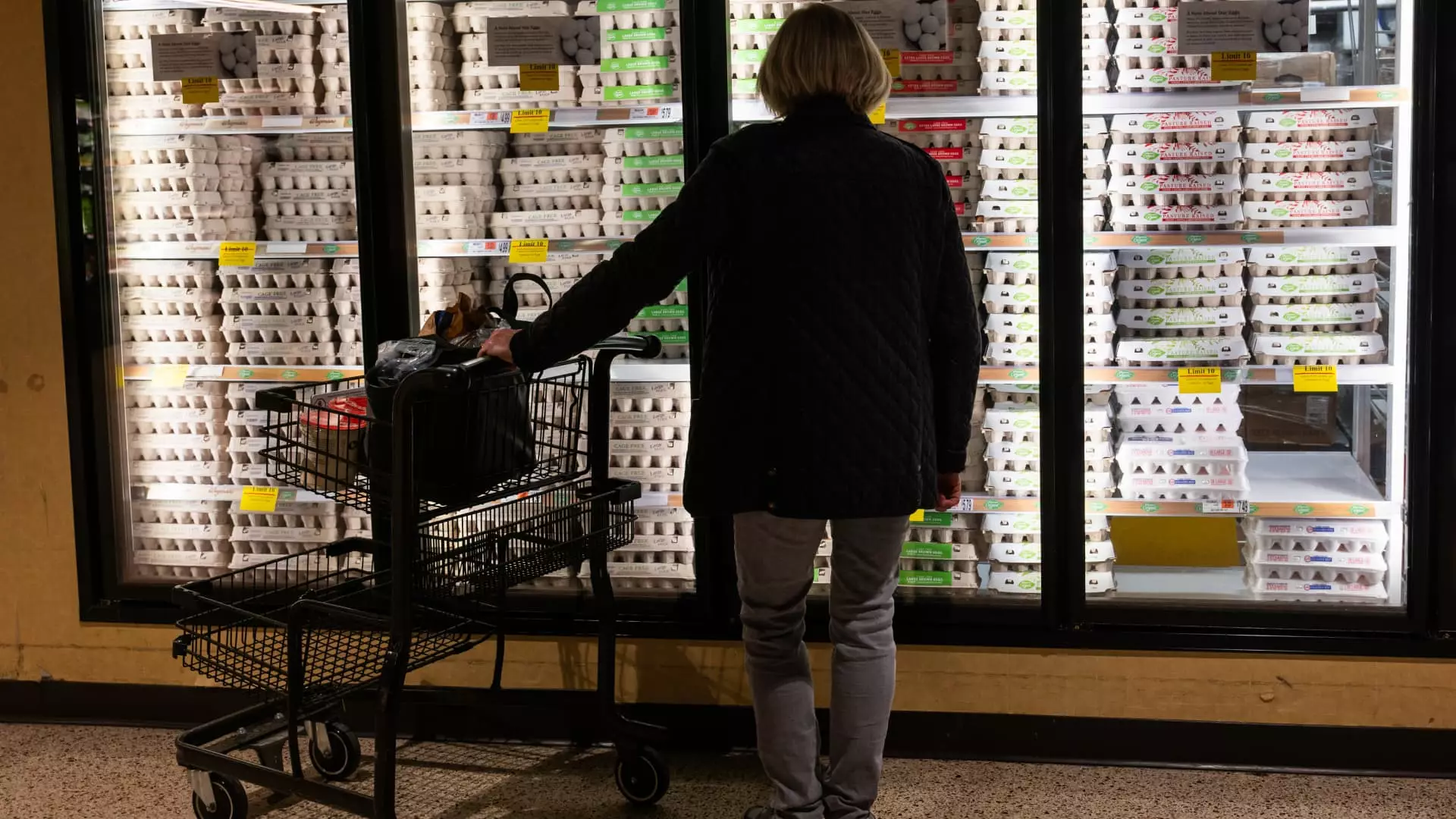In a refreshing turn of events, wholesale egg prices have experienced a dramatic dip in recent weeks, offering a glimmer of hope to consumers long beleaguered by exorbitant grocery costs. As of last Friday, the price for a dozen eggs fell to $4.83, marking a staggering 44% decrease from the peak of $8.58 reached on February 28. The volatility in egg prices has created a mixed bag of emotions among consumers, many of whom have felt the burden of record-high grocery bills in recent months. Though the outlook appears somewhat positive, the question remains: how quickly will these savings translate to consumers at the retail level?
A Temporary Reprieve from Bird Flu
The latest analysis from the U.S. Department of Agriculture (USDA) suggests that a notable decline in avian flu outbreaks has contributed to the recent drop in wholesale prices. In March, reports indicated a tapering of significant bird flu cases that had previously ravaged egg-laying chicken populations, leading to substantial supply shortages. With millions of chickens either dead or removed from production due to the disease, the supply chain has struggled to keep pace with demand, resulting in unprecedented prices earlier this year. Analysts from Expana highlight how these developments have created a landscape where the pressure on wholesale prices is beginning to ease.
Consumer Behavior and Supply Dynamics
Interestingly, the decline in prices is not solely a result of improved supply; consumer purchasing behavior has also played a pivotal role. Faced with the sticker shock of high egg costs, many households have engaged in reduced consumption, dampening demand when prices soared. Additionally, akin to the early days of the pandemic, consumers hoarded eggs in anticipation of further price hikes, significantly reducing their current purchasing needs. This combination of reduced demand and replenished supply has led to a significant cooling in the market. However, experts caution that many consumers still feel the impact of those past high prices, as retailers are often slow to adjust their prices in accordance with wholesale shifts.
The Easter Effect on Prices
Looking ahead, the approach of the Easter holiday could inject some volatility back into the egg market. Traditionally, demand spikes during this period as families prepare for celebrations, perhaps offsetting some of the recent declines. Kevin Bergquist from the Wells Fargo Agri-Food Institute suggests that elevated demand in conjunction with the holiday could lead to fluctuating prices. Consumers seeking immediate relief may find themselves in a precarious position, as the cyclical nature of seasonal demand coupled with lingering effects from previous supply disruptions means that stability in egg pricing is likely more of a long-term prospect.
A Cautious Outlook in an Uncertain Market
Despite the recent price relaxation, it is crucial to note that the market remains highly unpredictable. Karyn Rispoli, an analyst in the egg market, emphasizes that retail prices often lag behind wholesale adjustments by two to three weeks. Thus, while consumers may hope for a swift drop in prices at grocery stores, reality may paint a different picture. Retailers have the autonomy to dictate how closely they will align their prices with wholesale trends, making it challenging for consumers to gauge real-time market conditions.
Moreover, the specter of governmental scrutiny looms over major producers amid the ongoing antitrust investigation into their pricing strategies. This regulatory backdrop could lead to significant changes in the market dynamics that consumers should remain aware of.
While the recent decline in wholesale egg prices brings a much-needed breath of fresh air to an otherwise stressful grocery landscape, the journey to stable and affordable egg prices remains fraught with challenges. With seasonal demand on the horizon and regulatory shifts possible, consumers would be wise to stay vigilant as they navigate the intricate web of the egg market.

